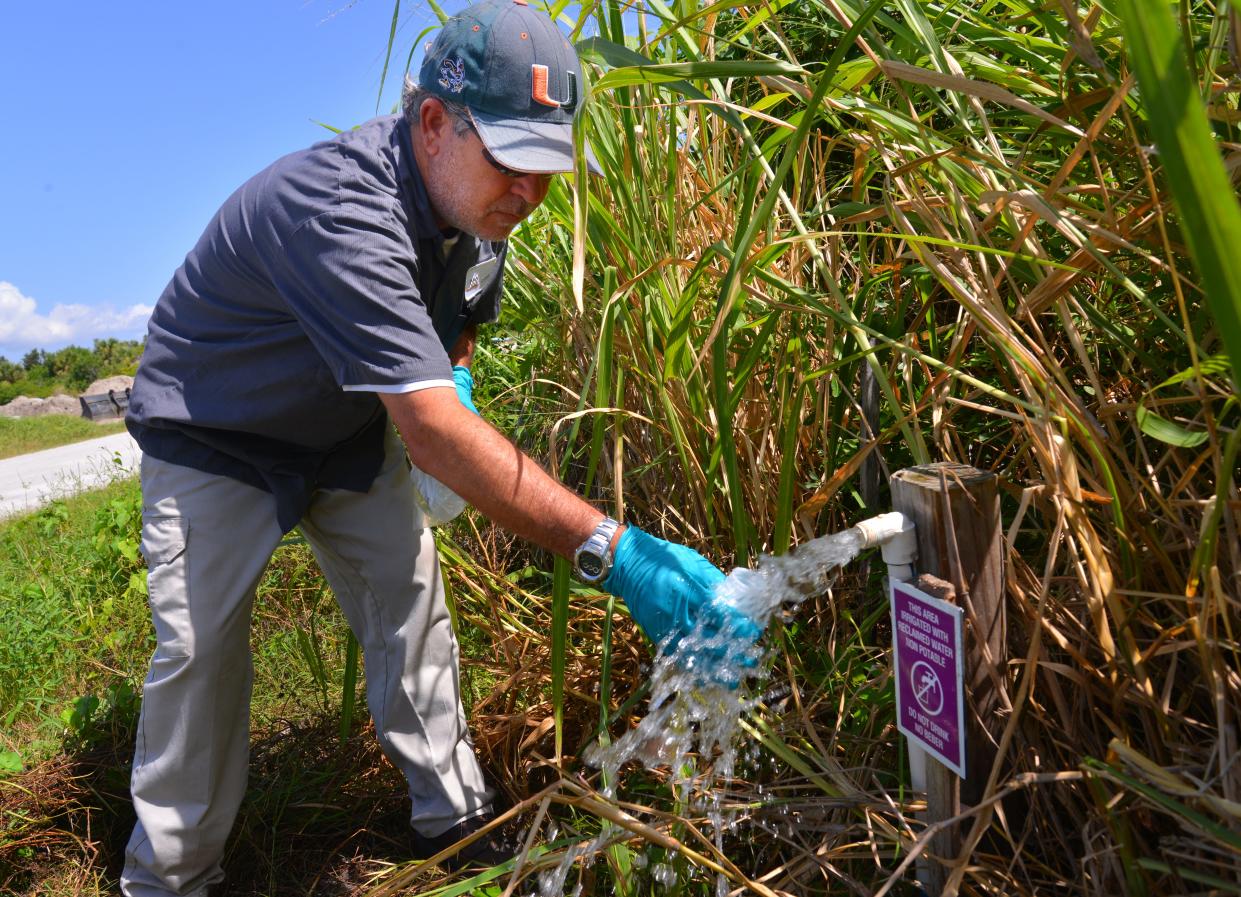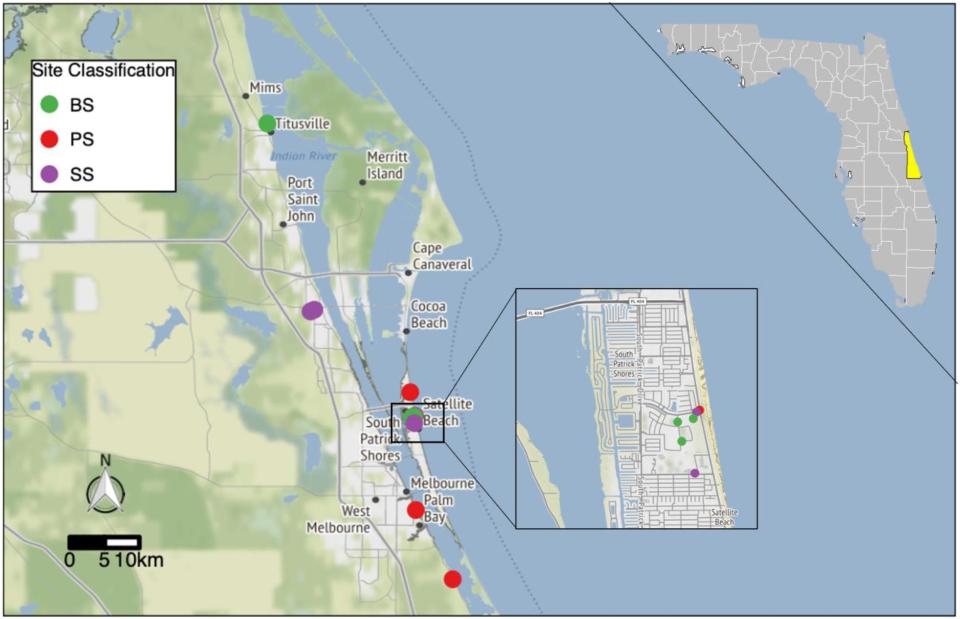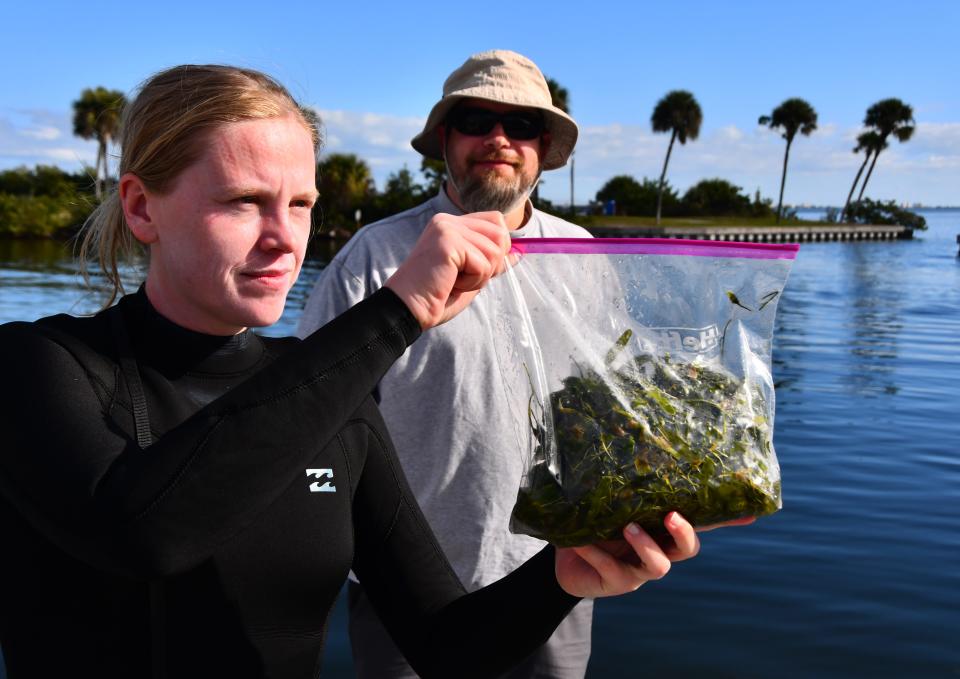UF study: Reclaimed water 'major' source of toxic 'forever' chemicals in Brevard soils

Sprinkling our lawns with treated sewage, or reclaimed water, is a "major source" of cancer-causing forever chemicals in Brevard County soils, a new study suggests.
University of Florida's latest findings of so-called PFAS compounds in Space Coast soils strikes yet another alarm bell to those watering their backyard gardens with reclaimed water or private well water, implying they ought think twice before eating what they grow. But the UF researchers also warn of many gray areas when it comes to the wastewater we sprinkle on our lawns and gardens.
"It's difficult when there's not all the data to assess the risk," said Katherine Deliz Quiñones, assistant professor at University of Florida's Department of Environmental Engineering Sciences. "If you're in a region that has been detected with high concentrations in soil because of the proximity to a source site .. I would be cautious."
The UF study, published this month in the journal Soil & Environmental Health, shows PFAS in soil at the highest levels near Patrick Space Force Base, a cement plant in Grant-Valkaria, and a chemical plant in Palm Bay. The specific compounds they're finding also could help rank sites for future cleanups, as scientists learn more about which PFAS chemicals are the most dangerous.
Deliz Quiñones' student, Sanneri Santiago Borrés, who's earing a Ph.D. in Environmental Engineering, was lead author on the study.

The compounds, called per- and polyfluoroalkyl substances (PFAS), enter drinking water and the Indian River Lagoon from soils contaminated with sewage, fire-fighting foams and countless consumer products. Experts say there’s no cheap or easy way of getting them out of drinking water or the environment, or even of measuring them.
Why is PFAS bad?
Some PFAS chemicals are linked to a host of cancers, immune suppression, thyroid defects, fetal abnormalities, childhood diseases, reproductive harm, high cholesterol and other health issues. They can take millennia to break down in the environment and decades in our bodies. Their damage can be delivered in extremely trace doses — measured in parts per trillion. A 2020 Danish study found people with higher blood levels of PFAS had more severe COVID-19 cases. Other studies have shown the compounds also can inhibit the effectiveness of COVID and other vaccines.
Last month, EPA issued its first-ever national limits on PFAS in drinking water. Utilities have five years to meet the new limits. So scientists are scrambling to provide the baseline data for how to deal with the compounds.
Where did UF find the highest PFAS levels?
Of the 12 sites UF tested, the highest PFAS diversity and concentration were near FAR Chemical Inc. in Palm Bay; CEMEX Malabar Valkaria cement factory; Patrick Space Force Base; and at a military disposal site several miles south of Patrick.
Military leaves long legacy of health fears near Patrick
PFAS was among the newest of a litany of known pollutants in the ground at and near Patrick that local activists have pointed to for decades as causing cancer and other health problems. Many water their lawns from private irrigation wells that tap the same groundwater where PFAS and other pollutants have been detected for years.
The concerns culminated in a visit from famous activist Erin Brockovich in September 2018, after another spate of cancers in Satellite Beach were brought to her attention by Julie Greenwalt, a Jacksonville oncologist who graduated from Satellite High School and is a cancer survivor.
More than 300 homes lie within the 52-acre area south of Patrick Space Force Base targeted for cleanup. Some residents fear what dangers a shovel might one day find in their yards, from World War II-era airplane parts to unexploded ordinance and drums of unknown chemicals.

Enter University of Florida researchers
For the past several years, UF has been finding PFAS in Brevard's swimming pools, in the lagoon and seagrass. Their latest study was among several others done under a $798,193 grant the U.S. Environmental Protection Agency awarded UF in 2020 to study PFAS in Brevard. The project examines pathways of PFAS exposures in areas of the county vulnerable to flooding and ways for the public to counter those exposures.
Local government tests also have found high PFAS levels three years ago in Cocoa Beach sewage, South Patrick Shores soil and groundwater. Low levels of one of the compounds, PFBA, showed up in tap water of several beachside schools on Melbourne's water system but city officials said that chemical was among the least harmful of PFAS compounds and is safe to drink.
Other studies have found high PFAS in freshwater fish, alligators and other wildlife.
What was PFAS for?
PFAS consists of more than 12,000 compounds designed to repel grease, water and oil. They had been used in the fire-fighting foams in fire-training exercises on military bases since the 1960s. The chemicals were also used in pesticides, Teflon coatings and many other consumer and industrial products. Their use has been phased out but the compounds remain in the environment for decades and are not regulated.
How did UF do the study?
Soil samples were taken from the first six inches of topsoil in February 2021 from a dozen sites in Brevard, chosen in part via community knowledge and concerns, with help from volunteers with the nonprofit Fight for Zero.
Exposure risks can be greater on barren land, where soil dust can be inhaled or children can be exposed by digging in the dirt.
"In areas that we've detected higher concentrations, if the area is covered with grass, the risk should be minimal," Deliz Quiñones said. "If it's covered soil, the risk will definitely be lower."
Deliz Quiñones said UF hopes to win more grants to continue studying how environmental PFAS levels in Brevard correlate with health risks.
"How concentrations relate to body burden, we don't know," she said.
Contact Waymer at (321) 261-5903 or jwaymer@floridatoday.com. Follow him on X (Twitter) at @JWayEnviro.
This article originally appeared on Florida Today: UF finds PFAS in Brevard soils may be from reclaimed water

